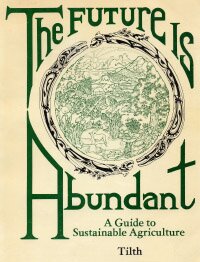
The Future is Abundant
A Guide to Sustainable Agriculture
Tilth Producers of Washington Home | WA Tilth Assoc. | Conference | Directory | Journal | Placement Service | Calendar | Action Alerts
Legislative Update | Bulletin Board | Classifieds | Questions on Agriculture? | Photo Gallery | Links | Contact Us | Join Now | Volunteer

Livestock includes all domestic animals that people introduce to the land. They must be carefully managed by feeding, breeding, sheltering and harvesting.
Domestic animcals are more than merely a source of eggs, milk and meat. Fed from the products of the garden or farm, domestic animals are vital links in the cycle of soil fertility. Animals have the capacity to convert plant materials inedible by humans into food and fiber, while their manure is one of the most valuable renewable resources for agriculture. When properly used as fertilizer, animal manures increase crop yields and contribute to sustained fertility in the soil. Composted manures are high in stable organic matter, essential for humus formation.
One of the problems that commercial farmers have in converting to soil-conserving methods is the lack of economic justification for including soil building crops in long-range rotations. Farmers know that grasses and legumes protect against erosion and build soil humus, but they cannot justify the income lost from taking lands out of production. By reintroducing and properly managing and marketing livestock and their products, effective use can be made of grasses and legumes in crop rotations, thus insuring sustained fertility and productivity.
For beginners interested in using large draft animals, oxen work at a slower pace than horses, and are easier to work with. Because oxen can be developed from any cattle breed, they are also less expensive to start with. Unlike costly draft horses, oxen can be butchered for meat if the experience of working with them is unsatisfactory without great financial loss.
Both oxen and draft horses can be maintained on quality summer pasture during extended idle periods, but they must have feed supplements when they are working. Draft animals can be "fueled" by farm-produced feeds. Working with draft animals and raising their feed at home saves the cash outlay needed for fossil fuel to run machinery or for animal feed raised off the farm. The work received from these animals often more than repays the farmer for raising the feed.
Tilth Producers of Washington Home | WA Tilth Assoc. | Conference | Directory | Journal | Placement Service | Calendar | Action Alerts
Legislative Update | Bulletin Board | Classifieds | Questions on Agriculture? | Photo Gallery | Links | Contact Us | Join Now | Volunteer